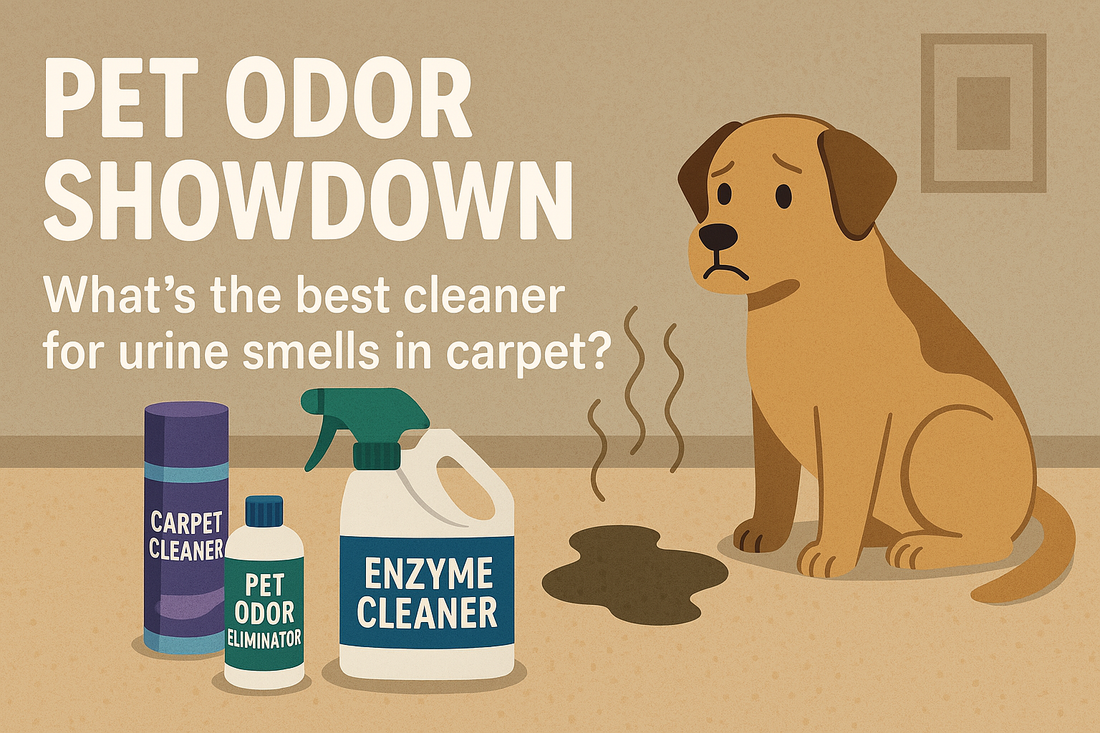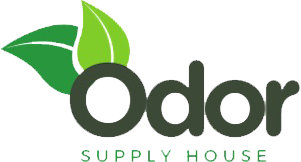
🐾 The Best Pet Odor Removers for Carpets: What Really Works?
Share
Let’s be honest — as much as we love our pets, there’s nothing charming about that unmistakable smell of urine soaked into your carpet. Whether it's a new puppy learning the ropes, a senior cat missing the litter box, or a marking mishap, pet urine odors are stubborn, strong, and often hidden deep in the padding of your rug.
So what’s the best way to get rid of it — for good?
In this blog, we’re breaking down the top cleaning solutions used by pros and pet parents alike:
- Chlorine Dioxide (ClO₂)
- Hypochlorous Acid (HOCl)
- Ozonated Water
- Enzymatic Cleaners
- Hydrogen Peroxide
- Vinegar + Baking Soda
We’ll compare their odor-fighting power, safety for fabrics and pets, and the best use cases for each.
🚨 Why Pet Urine Is So Hard to Remove
When your pet urinates on the carpet, you’re not just dealing with liquid — you’re dealing with a complex blend of urea, ammonia, uric acid crystals, and bacteria. As the urine dries, those uric acid crystals bond tightly to fibers, and bacteria feast on them, releasing nasty-smelling volatile compounds in the process.
If not properly neutralized, the odor:
- Stays trapped deep in carpet padding
- Reactivates with humidity
- Attracts repeat marking behavior
That’s why using just soap or a standard carpet cleaner isn’t enough.
🧼 Let’s Compare: What Actually Works on Pet Urine?
Here’s a side-by-side breakdown of the top odor removal options and how they stack up:
| Cleaner | Odor Removal | Fabric Safety | Pet Safe | Kills Bacteria | Best For |
|---|---|---|---|---|---|
| ClO₂ (20–50 ppm) | ⭐⭐⭐⭐⭐ | ✅✅✅ | ✅ (low ppm) | ✅✅✅ | Deep-set urine, old smells |
| HOCl (100–200 ppm) | ⭐⭐⭐⭐ | ✅✅✅ | ✅✅✅ | ✅✅✅ | Daily cleaning, fresh messes |
| Ozonated Water (1 ppm) | ⭐⭐ | ✅✅✅ | ✅✅✅ | ✅✅ | Immediate cleanups |
| Enzyme Cleaners | ⭐⭐⭐⭐ | ✅✅✅ | ✅✅✅ | ❌ (relies on enzymes) | Uric acid breakdown |
| Hydrogen Peroxide (3%) | ⭐⭐⭐ | ⚠️ (can bleach) | ✅ | ✅✅ | Spot treating on light rugs |
| Vinegar + Baking Soda | ⭐⭐ | ✅✅✅ | ✅✅✅ | ❌ | Surface deodorizing only |
🧪 Chlorine Dioxide (ClO₂): The Deep Cleaner
If your carpet smells like an animal shelter on a hot day, ClO₂ at 20–50 ppm is your best friend.
ClO₂ is a selective oxidizer that targets odor-causing molecules like ammonia, uric acid, and microbial waste. It penetrates deep into carpet fibers and padding, neutralizing odors instead of masking them.
✅ Pros:
- Powerful deodorizer & disinfectant
- Breaks down uric acid
- Safe at low concentrations
- Leaves no residue
⚠️ Watch Out:
- Use only at 20–50 ppm on carpet to avoid bleaching
- Always test a hidden spot first
Pro Tip: Use a sprayer for light misting, or inject into the padding with a carpet wand for severe cases.
💧 Hypochlorous Acid (HOCl): The Gentle Everyday Hero
HOCl is the cleaner you didn’t know you needed. It’s made naturally by white blood cells and is skin-safe, food-safe, and pet-safe. It kills bacteria and viruses on contact and lightly oxidizes odors without bleaching.
At 100–200 ppm, it’s great for light urine spots, daily cleaning, or follow-up treatment after enzyme or ClO₂ use.
✅ Pros:
- Gentle and non-toxic
- Works on fresh messes
- Safe on all carpet types
- No rinsing required
⚠️ Watch Out:
- Not strong enough alone for old or deeply embedded odors
Pro Tip: Use it to clean pet beds, floors, and around litter boxes, too!
⚡ Ozonated Water: Quick but Short-Lived
Ozone in water is a strong oxidizer, but it’s highly unstable. At 1 ppm, it works best when applied immediately after an accident.
✅ Pros:
- Safe and natural
- Fast-acting
- Surface odor reduction
⚠️ Watch Out:
- Ineffective for deep or old urine smells
- Loses strength within minutes
Pro Tip: Use right away and follow up with a stronger deodorizer if needed.
🧬 Enzymatic Cleaners: The Long Game
Enzymes are biological cleaners that digest urea and uric acid crystals. They’re safe and effective but take time to work — often several hours to fully break down the odor source.
✅ Pros:
- Targets the root of the odor
- Padding-safe
- Great for repeat offenders
⚠️ Watch Out:
- Needs dwell time
- May need a follow-up sanitizer like HOCl or ClO₂
Pro Tip: Apply generously and cover the spot with a damp towel to keep the enzymes active longer.
🧪 Hydrogen Peroxide (3%): Use With Caution
Hydrogen peroxide oxidizes organic matter, including odor molecules, but it can bleach fabrics and degrade carpet fibers if overused.
✅ Pros:
- Strong oxidizer
- Readily available
⚠️ Watch Out:
- Test on light-colored rugs only
- Can damage some materials
Pro Tip: Use a 1:1 mix of peroxide and water, and never mix with vinegar.
🧂 Vinegar + Baking Soda: The DIY Myth
This combo can neutralize ammonia odors and absorb some surface smells, but it doesn't destroy uric acid crystals or bacteria.
✅ Pros:
- Cheap and safe
- Great for mild accidents
⚠️ Watch Out:
- Won’t solve deep odor problems
- Often masks rather than eliminates
💡 Final Verdict: Which Should You Choose?
| Your Situation | Best Solution |
|---|---|
| Fresh urine on carpet | HOCl or ozonated water |
| Old, persistent urine odor | ClO₂ (20–50 ppm) |
| Odor in carpet padding | Enzyme + ClO₂ |
| Daily maintenance with pets | HOCl |
| Immediate but light deodorizing | Ozonated water |
| Budget DIY, light surface odor | Vinegar + baking soda |
🧴 Our Recommendation:
At Odor Supply House, we recommend a 3-step combo for unbeatable pet odor control:
- Enzyme cleaner to break down the urine at the source.
- HOCl spray for immediate disinfection and fabric-safe odor control.
- ClO₂ misting for total odor neutralization without harsh chemicals.
#petodorremoval #chlorinedioxide #hypochlorousacid #carpetcleaning #hocl #clo2 #ozonatedwater #peturine #carpetcare #odorcontrol #petowners #enzymaticcleaner
